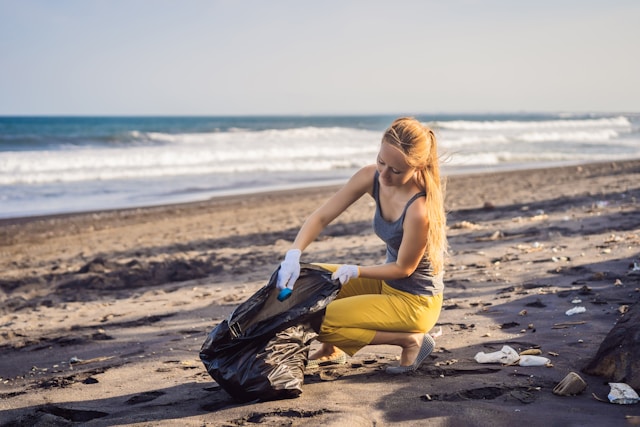Microplastics, tiny plastic particles less than five millimeters in size, have emerged as a pervasive environmental pollutant, infiltrating ecosystems worldwide from the deepest oceans to the highest mountains. Originally derived from the breakdown of larger plastic debris and from products containing microbeads, these minuscule pollutants pose significant challenges to environmental health and biodiversity. This article explores the origins, pathways, impacts, and potential solutions to the growing issue of microplastic pollution.
Origins and Pathways
Microplastics originate from a variety of sources, both primary, where they are manufactured at a microscopic size for use in products like cosmetics and industrial processes, and secondary, resulting from the fragmentation of larger plastic waste. Once released into the environment, they can travel vast distances. Waterways, wind, and animal vectors disseminate microplastics across the globe, embedding them in terrestrial, freshwater, and marine ecosystems.
Environmental and Health Impacts
The environmental impact of microplastics is profound and multifaceted. In marine environments, microplastics are ingested by a wide range of organisms, from plankton to whales, often leading to physical harm, chemical exposure, and disruption of feeding behaviors. On land, they can alter the physical properties of soil, affecting water retention and plant growth. Furthermore, microplastics act as vectors for other pollutants, including heavy metals and organic contaminants, exacerbating their ecological effects.
The potential human health impacts of microplastics are a growing concern, although not yet fully understood. Microplastics have been found in human tissues and organs, raising questions about their pathways into the human body and the implications for health. The possibility of bioaccumulation and the role of microplastics in transporting toxic compounds within the body are areas of active research.
Tackling Microplastic Pollution
Addressing microplastic pollution requires a multifaceted approach:
- Reduction at Source: Limiting the production and use of disposable plastics and banning microbeads in consumer products can significantly reduce microplastic pollution.
- Waste Management Improvements: Enhancing plastic waste management practices to minimize leakage into the environment is critical. This includes increasing recycling rates, developing biodegradable alternatives, and promoting circular economy principles.
- Cleanup Initiatives: While challenging due to their size and ubiquity, efforts to remove microplastics from the environment are underway, including technologies to filter microplastics from water bodies.
- Research and Monitoring: Expanding scientific research to better understand the sources, pathways, and impacts of microplastics will support more effective policies and solutions. Monitoring programs are essential to track the spread and evolution of microplastic pollution.
Global Action and Individual Responsibility
Combating microplastic pollution demands global cooperation and action at all levels of society. International agreements to reduce plastic waste, along with national and local policies, are crucial for stemming the flow of microplastics into the environment. On an individual level, reducing plastic use, supporting sustainable products, and participating in cleanup efforts can contribute to the solution.
Conclusion: A Call to Action
Microplastic pollution is a complex and pervasive problem that encapsulates the broader challenges of plastic waste. As scientific understanding grows and public awareness increases, there is a mounting call to action to address this invisible pollutant. Through concerted efforts across governments, industries, communities, and individuals, it is possible to mitigate the impact of microplastics and safeguard the health of the planet for future generations.





